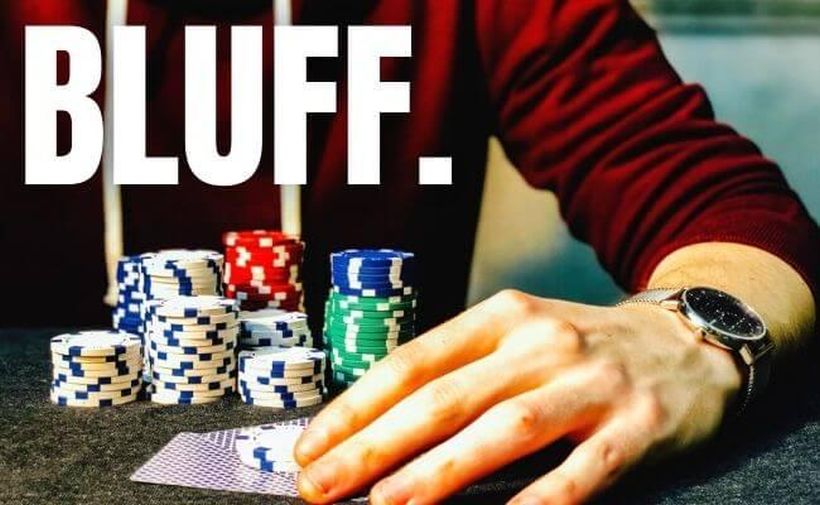Bluffing is an essential skill in poker, akin to an art form. Its mastery lies in understanding opponents, harnessing psychology, and timing the deception with precision. This article delves into the subtle practices that differentiate a successful bluff from a catastrophic failure, exploring how professional poker players hone this craft.
Timing the Bluff: Striking the Balance
In poker, timing is everything. A well-timed bluff can win a pot, while a poorly timed one can be a costly mistake. Successful bluffers understand the game's rhythm and their opponents' playing patterns. They pick the perfect moment to bluff, often when the stakes are high, and the tension is palpable. This balance between risk and reward is a delicate dance that takes years of practice to perfect. Players often study statistical analysis to understand when to bluff optimally.They use software tools and hand history databases to analyze patterns and identify the best bluffing opportunities. This data-driven approach complements their intuition, allowing them to make informed, timely decisions.
Physical Tells: The Body's Betrayal
Body language is a critical aspect of bluffing. Professional players learn to control their physical gestures and expressions, maintaining a "poker face." However, they also learn to read others' physical tells. These can include eye movements, subtle hand gestures, or even the way an opponent places a bet. The ability to decode these signs is a vital skill that separates amateurs from professionals.Training to control physical tells is a meticulous process. Players often record themselves, practice with mirrors, or even use biofeedback technology to control involuntary responses like heart rate or skin conductance. This control allows them to mask their true intentions, adding another layer of complexity to the bluff.
The Psychology: Mind Games at Play
Bluffing is not mere chance; it is a calculated risk. It requires a deep understanding of human psychology, recognizing tells and predicting opponent reactions. Many professional players invest in psychological training to read facial expressions, body language, and subtle cues that betray their opponents' thoughts. Unravel the secrets of effective poker bluffs, understanding the mind games involved and how mastering the art can lead to lucrative wins, amplified by Pennsylvania Online Casino Promo Codes.Understanding the psychology of bluffing extends beyond the table. Professionals study human behavior, often enrolling in courses or seeking guidance from psychologists. They learn to manipulate their own emotional responses, projecting confidence, or uncertainty when needed. This mastery of emotional intelligence is crucial in high-stakes games.
Historical Masters: Legends of the Bluff
Players like Doyle Brunson, active from the 1970s through the 2000s, and Phil Ivey, who has been a dominating force since the late 1990s, have become synonymous with the art of bluffing. Their legendary bluffs have been immortalized in poker history, with memorable hands that showcase their daring, intellect, and finesse. These players have set a high bar for professional poker, inspiring a new generation of bluffers. The contributions of bluff masters extend to authoring books, hosting seminars, and actively promoting the game. They've become ambassadors for poker, sharing their wisdom and insights, inspiring countless players to explore the thrilling world of bluffing.Common Scenarios: Recognizing Opportunities
The best bluffs often occur in specific scenarios, such as when an opponent shows weakness or when the board is favorable for a believable story. Recognizing these situations requires an intricate understanding of the game's dynamics and continuous adaptation to the ever-changing flow of the game. Adapting to these scenarios is part of the subtle art of bluffing that professionals have developed over countless hands. Analyzing common bluffing scenarios requires continuous learning. Professionals often collaborate, discussing hands and strategies with peers. They dissect their games, seeking feedback, and refining their understanding of the game's nuances.Training and Preparation: Building the Bluff Arsenal

Professional players invest in rigorous training and mental preparation to execute successful bluffs. They study past games, analyze opponents, and even engage coaches to refine their strategies. This training involves understanding the mathematics of the game, simulating different bluffing scenarios, and mastering the emotional resilience required to maintain composure under pressure.
The role of professional poker coaches cannot be underestimated. They offer personalized training, helping players to identify weaknesses, develop specific bluffing strategies, and simulate real-game scenarios. This tailored approach accelerates learning and sharpens the player's bluffing skills.


